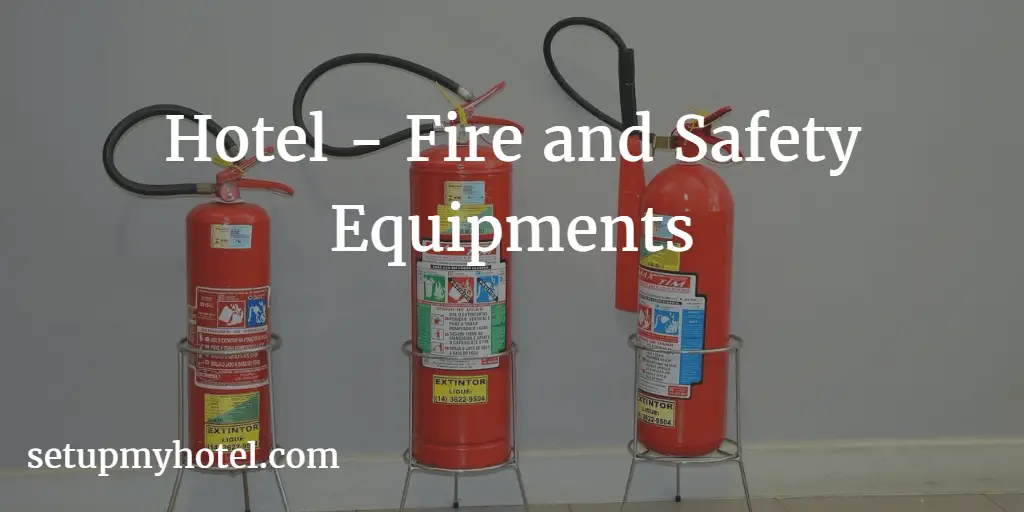Types of Safety Equipment Used in the Hotel Industry
SafetySafety is a condition in which persons are safe from injury; hurt; or loss while present in the work... is a top priority in the hotel industry, both for guests and employees. To ensure everyone’s well-being, various types of safety equipment are utilized. One of the most important pieces of equipment is fire extinguisher. These are strategically placed throughout the hotel and are easily accessible in case of an emergency. Another crucial item is smoke detectors, which are installed in every room and public area.
They provide an early warning system in case of a fire and can save lives. In addition, many hotels also have sprinkler systems installed to help contain fires before they spread. Other safety equipment includes first aid kits, defibrillators, and emergency lighting. All of these items work together to create a safe environment for guests and employees alike.
The basic safety equipment a lodging establishment should have and be aware of includes such things as smoke detectors, fire extinguishers, sprinkler systems, and accident prevention signs.
1. Smoke Detectors:
Smoke or heat detection units are required by an increasing number of local jurisdictions. Regulations vary from those only requiring smoke and/or heat detectors in corridors, storerooms, and under stairways to those requiring full systems that protect every guest room, guest bathroom, public area, and back-of-the-house location.
Smoke and heat detection units also vary in their characteristics; some can report a heat buildup before evidence of smoke or flame, while others respond only to smoke and other products of combustion.
Automated systems, which integrate all smoke detectors in each location with a master panel, permit staff to immediately determine where a smoke detector has been activated and respond accordingly.
Many local jurisdictions enacted regulations requiring fully automated smoke detector systems in all new construction and the retrofitting of smoke detectors for all lodging establishments.
2. FireFire are chemical decomposition of a fuel element through combustion or burning. For fire to occur a... Extinguishers:
There are four classes of fires that a lodging property should be prepared for
- Class A fires involve ordinary combustibles,
- Class B fires involve flammable liquids,
- Class C fires involve electrical equipment, and
- Class K fires involve cooking oils and fats.
Tips: Although some jurisdictions will permit the elimination of fire extinguishers in a facility with a full sprinkler system, consideration should still be given to the use of extinguishers as they would permit the fighting of incipient fires rather than waiting for a fire to generate enough heat to activate an automatic sprinkler system.
3. Carbon Monoxide Detectors:
Carbon monoxide is a dangerous by-product of a malfunctioning water heater, kerosene heater, coal boiler, or any other wood, coal, or petroleum product unit. (It is also the most critical toxic gas generated in any structural fire).
There have been tragic incidents in which carbon monoxide from such units has resulted in the death of a guest or staff. Since carbon monoxide is invisible and has no smell, it cannot be detected by natural means.
4. Sprinkler Systems:
Sprinkler systems are now mandated in an establishment four stories or higher, adhering to the HotelA Hotel or Inn may be defined as an establishment whose primary business is providing lodging facili... and Fire Safety laws in each country. This requires a system covering back-of-the-house, public, and all guestroom locations.
Most jurisdictions now require full sprinkler systems in the new construction of any commercial occupancy regardless of the height of the structure.
5. AccidentAccident is the term used to describe employee injuries. Prevention Signs:
OSHA classifies accident prevention signs into three categories:
- Danger signs.
- Caution signs and,
- Safety instruction signs.
Danger signs: which indicate immediate danger, should be posted to warn of specific dangers and to warn that special precautions may be necessary. Red should be the basic color for identification of all danger signs, which include restricted areas, in case of fire, do not enter, and emergency exit signs.
Caution signs: should only be used to warn against potential hazards or to caution against unsafe practices. The color yellow has been used to advantage for marking physical hazards on stairs in both back-of-the-house stairways and fire stairwells. Areas of construction or remodeling should have caution signs. Floor stand signs could warn guests of wet floors and to watch their steps.











